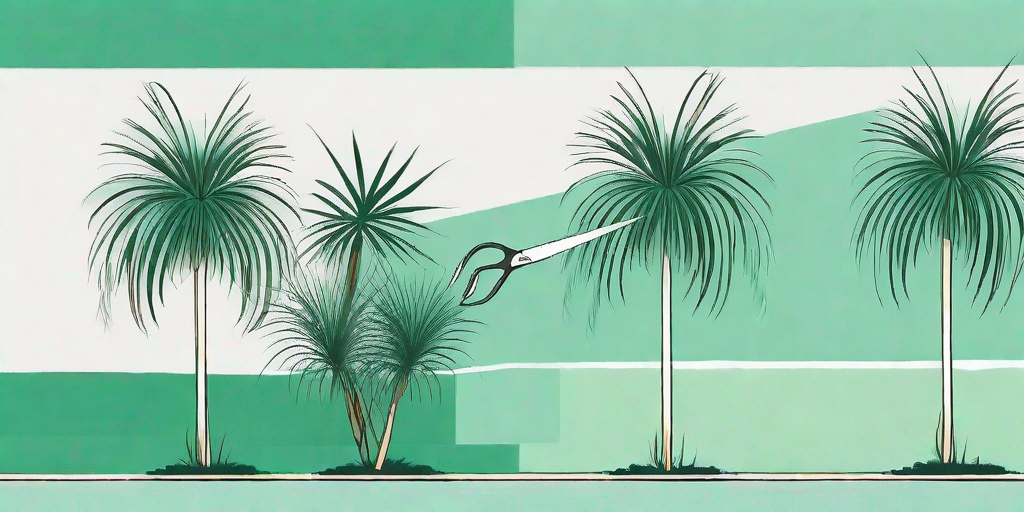
The Ponytail Palm, also known as Beaucarnea recurvata, is a delightful houseplant that adds a touch of the tropics to any living space. Despite its name, it's not actually a palm but a succulent, making it a low-maintenance and hardy addition to your indoor garden. But even the hardiest of plants can benefit from a little TLC, and that's where pruning comes in.
Understanding the Ponytail Palm
The Ponytail Palm, with its bulbous base and long, cascading leaves, is a sight to behold. It's a slow-growing plant, which means it won't suddenly take over your living room, but it also means that proper care and maintenance are essential to keep it looking its best.
Pruning is a crucial part of this care. It's not just about keeping your plant looking neat and tidy; it's also about promoting healthy growth and preventing disease. But before we dive into the nitty-gritty of pruning, let's take a closer look at the Ponytail Palm itself.
The Anatomy of a Ponytail Palm
The Ponytail Palm has three main parts: the bulbous base (or caudex), the long, slender stem, and the tuft of long, arching leaves that give the plant its name. The caudex stores water, making the Ponytail Palm drought-resistant and perfect for those of us who are a little forgetful when it comes to watering.
The stem, while slender, is sturdy and can support the weight of the leaves, which can grow up to 6 feet long in indoor conditions. These leaves are thin and flexible, with a texture similar to that of grass. They're also the part of the plant that you'll be pruning most often.
The Art of Pruning
Pruning a Ponytail Palm is more of an art than a science. It's about understanding your plant, knowing what to look for, and making careful, considered cuts. But don't worry, it's not as daunting as it sounds. In fact, it can be quite therapeutic.
So, grab your pruning shears and put on your favorite gardening gloves, because we're about to delve into the wonderful world of Ponytail Palm pruning.
When to Prune
Unlike some plants, the Ponytail Palm doesn't have a specific pruning season. Instead, you should prune it as and when needed. This could be when the leaves start to look a little ragged, when they're turning brown, or when they're getting too long for your liking.
However, it's generally a good idea to give your Ponytail Palm a good prune at least once a year to keep it looking its best. This is also a good opportunity to check for any signs of disease or pests.
How to Prune
Pruning a Ponytail Palm is a straightforward process. Start by examining the leaves. Look for any that are brown, yellow, or damaged. These are the leaves that you'll want to remove.
Using a pair of sharp, clean pruning shears, cut the leaf off as close to the stem as possible. Be careful not to cut into the stem itself, as this can damage the plant.
Once you've removed the damaged leaves, you can start shaping your plant. This is where the artistry comes in. You can trim the leaves to whatever length you like, but try to keep the natural, cascading shape of the plant.
Remember, it's always better to prune too little than too much. You can always cut more off later, but you can't put it back once it's gone.
Post-Pruning Care
After you've pruned your Ponytail Palm, it's important to give it some extra care to help it recover. This includes watering it thoroughly (but not too much), giving it plenty of light, and keeping an eye out for any signs of stress.
It's also a good idea to clean your pruning shears after each use to prevent the spread of disease. A simple wipe with rubbing alcohol will do the trick.
FAQs
Can I propagate the cuttings from my Ponytail Palm?
Unfortunately, Ponytail Palms can't be propagated from leaf cuttings. However, they can be propagated from the bulbous base, although this is a more complex process.
What should I do if my Ponytail Palm has pests?
If you notice any pests on your Ponytail Palm, such as scale or spider mites, it's important to act quickly. Start by removing the pests manually, then treat the plant with an insecticidal soap or neem oil.
Why are the leaves on my Ponytail Palm turning yellow?
Yellow leaves can be a sign of overwatering. Remember, the Ponytail Palm is a succulent and doesn't need a lot of water. Try cutting back on your watering schedule and see if the leaves improve.
Conclusion
Pruning your Ponytail Palm can seem like a daunting task, but with a little knowledge and a lot of love, it's a task that can bring you and your plant closer together. So don't be afraid to pick up those shears and give your plant the haircut it deserves. After all, who doesn't love a good pampering session?
And remember, the key to a healthy and happy Ponytail Palm is regular care and attention. So keep an eye on your plant, get to know its needs, and it will reward you with its unique beauty for years to come.















